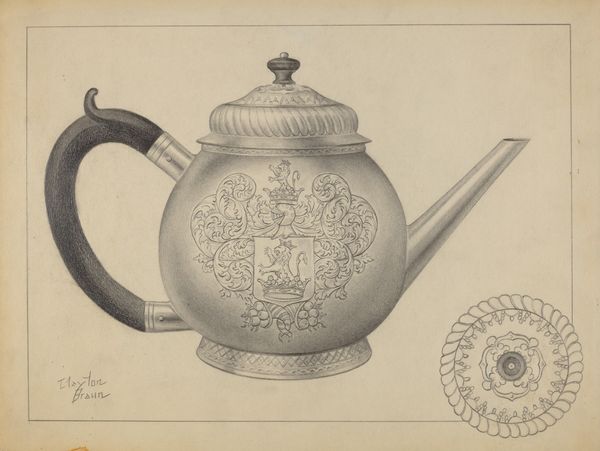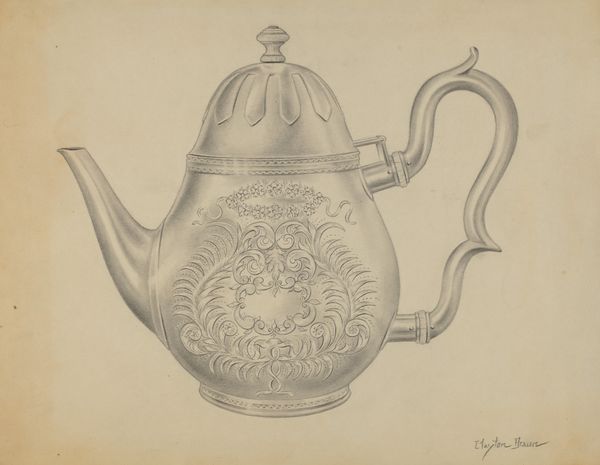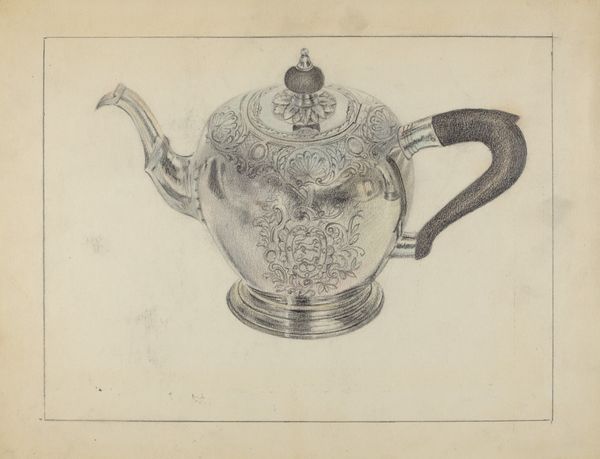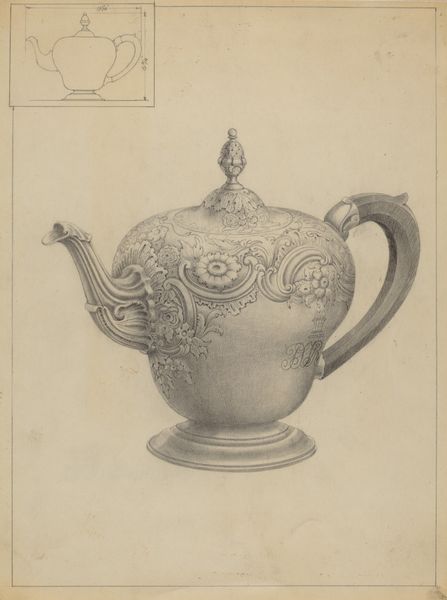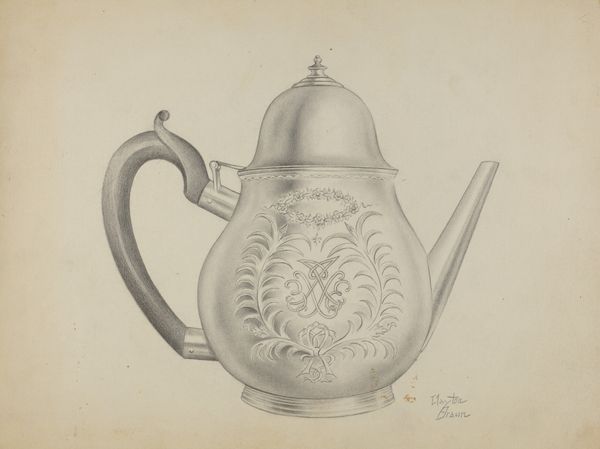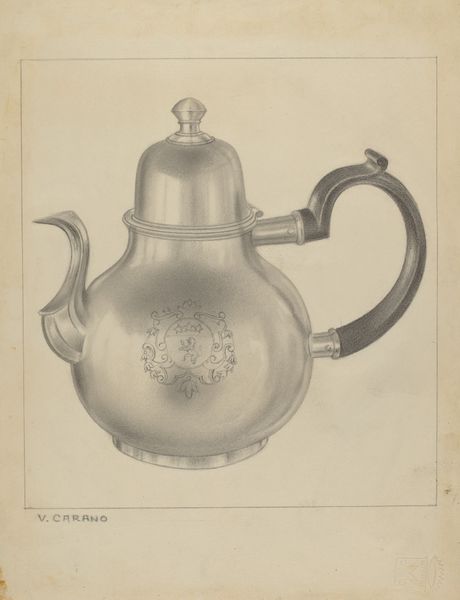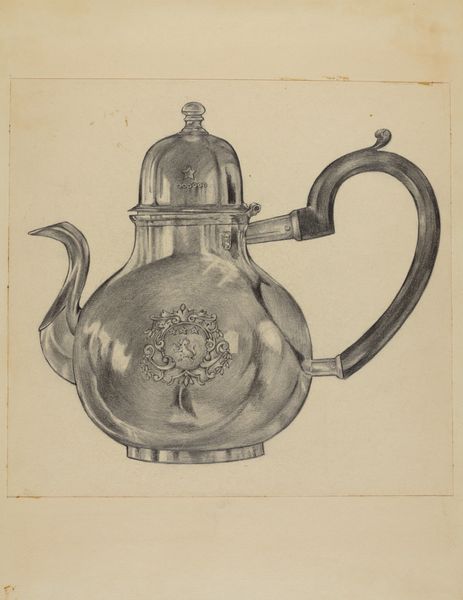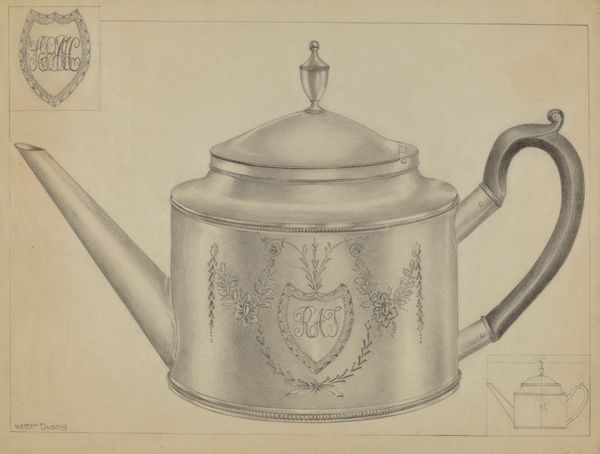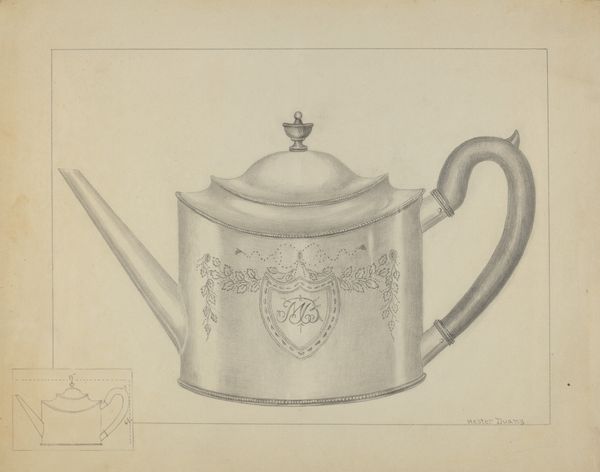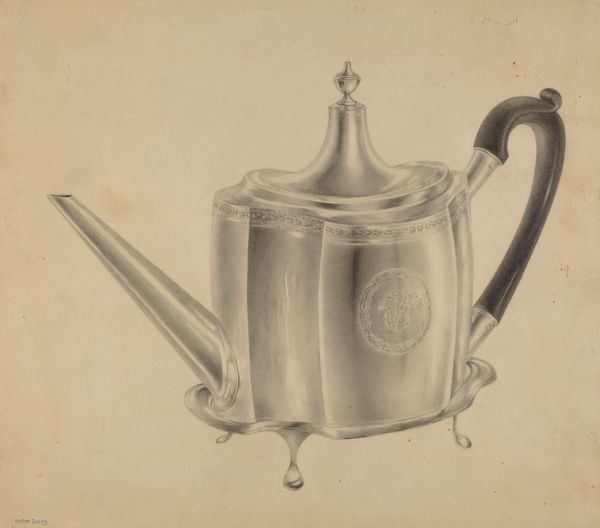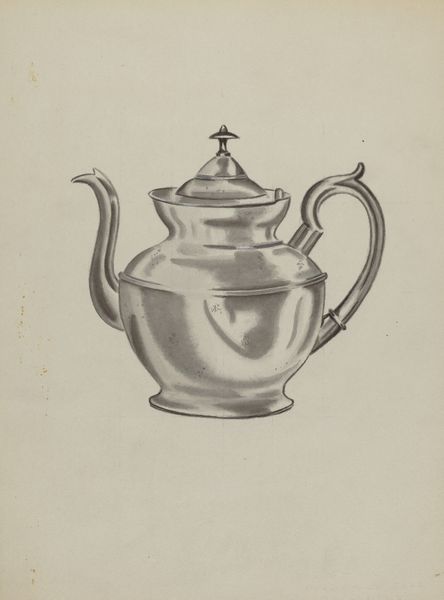
drawing, pencil
#
drawing
#
coloured pencil
#
geometric
#
pencil
Dimensions: overall: 22.9 x 30.4 cm (9 x 11 15/16 in.) Original IAD Object: 6 3/4" high
Copyright: National Gallery of Art: CC0 1.0
Curator: Before us is "Silver Teapot," a drawing executed between 1935 and 1942 by Vincent Carano, rendered with pencil and coloured pencil. Editor: The metallic sheen is striking, especially achieved with such humble materials. I’m curious about the labour required to depict this with such exactitude and nuance, but I wonder what use it served to draw a shiny teapot in the first place? Curator: Well, looking at it, the decorative flourishes tell a story of cultural tradition and perhaps social aspirations. Think of the act of sharing tea as ritual—laden with meaning, from colonialism and trade, to gendered social gatherings. It’s not JUST a teapot. Editor: Agreed. Though I am compelled by the actual process of its making. Imagine Carano carefully layering those pencil strokes, attempting to simulate the material properties of silver! It highlights how we assign value, culturally and economically. Silver, tea...commodities tied to labor. Curator: And consider, who was this for? Was it a study, a design, or an exercise? The almost photorealistic depiction, combined with the detailed heraldic symbols, begs questions about status, ownership, and inherited power. Editor: These details give insights to the status of things. It seems likely to me that the drawing and the object relate intimately to the systems that allowed both their making and design. A celebration of craft and commodities. Curator: It’s interesting how we interpret 'craft.' For so long, items made for domestic use were undervalued in fine art discourse. Placing this piece now allows a platform to examine how objects reflect identities. This silver teapot evokes notions of elegance, femininity, tradition and also privilege. Editor: So, from the means of production to the symbolism inherent in this drawing, this work encapsulates so many connections—social status, the economics of luxury. And what now is its use after existing between these gaps in its making and our current views of what objects tell us about the time they exist in? Curator: I see this humble teapot as a looking glass reflecting not just a beautiful object but revealing aspects of society and historical discourse. Editor: Precisely! And it reminds us to look beyond the surface to uncover the layers of social, material, and personal meaning embedded within the mundane.
Comments
No comments
Be the first to comment and join the conversation on the ultimate creative platform.
